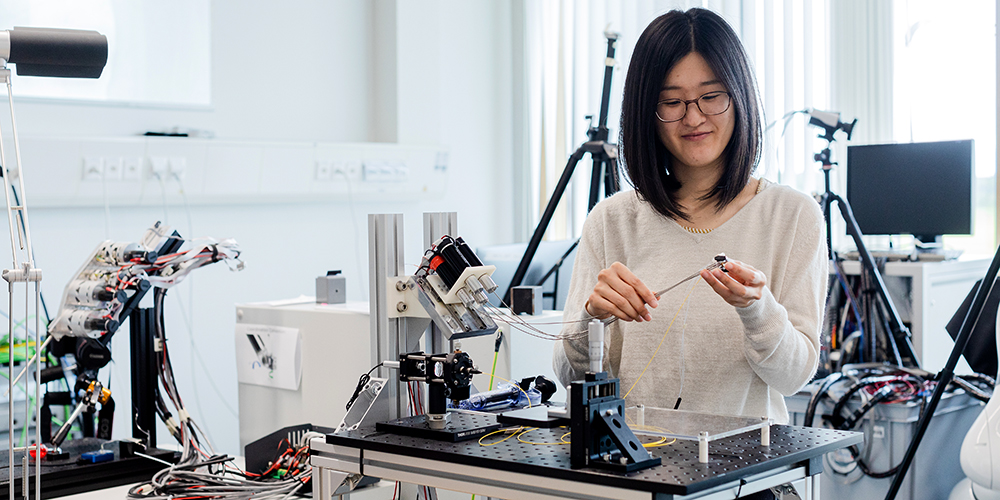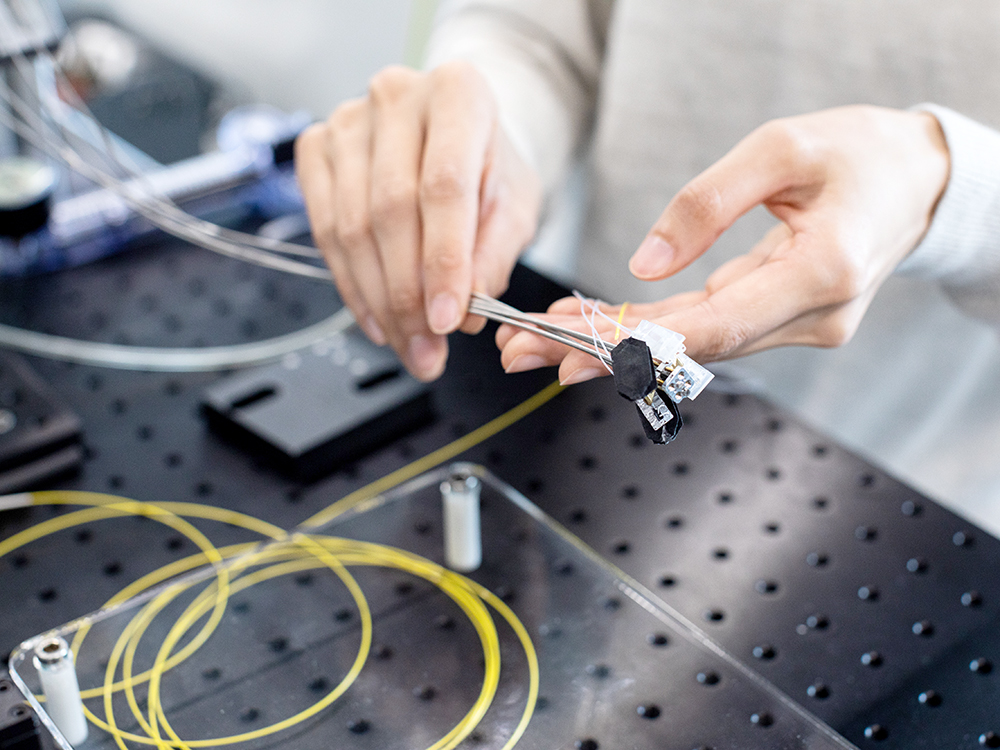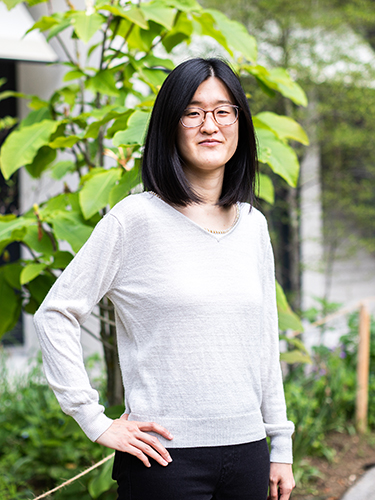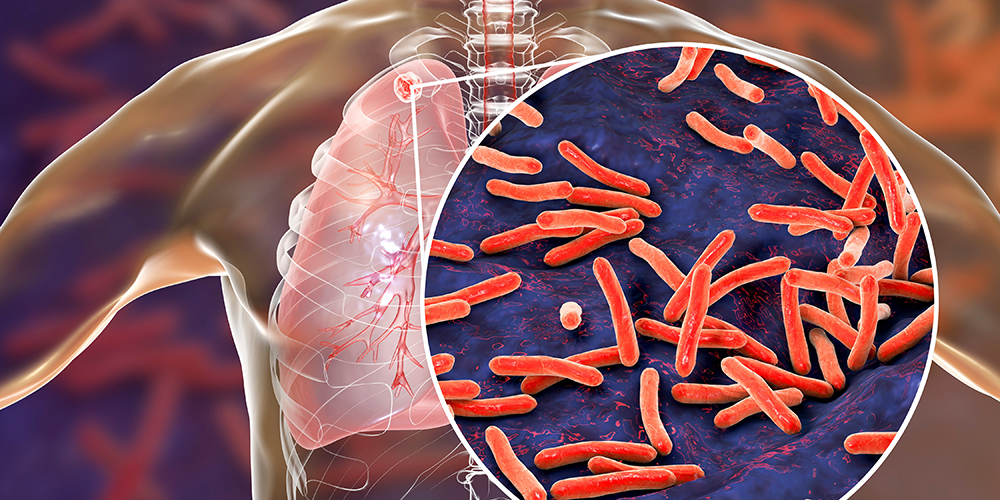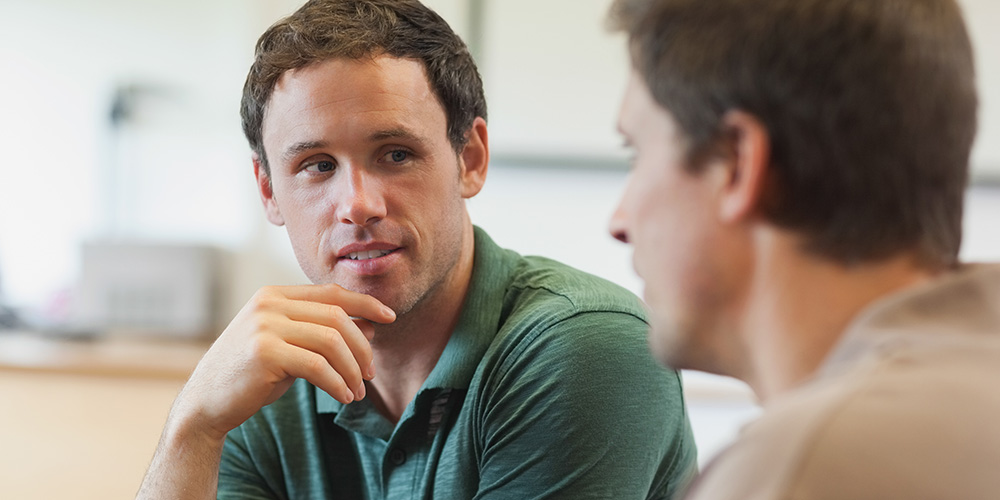In Focus: Yukiko Tomooka provides stable innovations
Yukiko Tomooka has worked at the Department of Biomedical Engineering for the past year and a half. The Japanese PhD student came to Basel to carry out research on surgical robotics. And because she is able to interact with the end users of her innovations here.
11 July 2023 | Catherine Weyer
Yukiko Tomooka’s delicate hands turn the robot carefully about its axis. A laser fiber is connected to the fingertip-sized device. Tomooka uses her fingers to trace movements in the air that the device would perform if used during an operation, and pulls apart a 3D model of a knee to show where the robot would be positioned.
Tomooka has now been working on this robot for one and a half years. It is the centerpiece of her group, the Bio-Inspired RObots for MEDicine Laboratory (BIROMED-Lab), led by Prof. Georg Rauter. The BIROMED-Lab carries out research at the Department of Biomedical Engineering (DBE) on how robots could help surgical procedures in the future.
Stability is key
Tomooka’s group has been developing a miniature robot for minimally invasive laser surgeries. First target applications of the robot are knee operations such as unicondylar knee arthroplasty or cartilage repair: “Many people undergo these procedures, however, these procedures are commonly performed as invasive open surgeries. We aim to make the procedures less invasive using this miniature robot ” explains the doctoral student. The knee also presents challenges for the researchers, as the joint is complex and space in the knee for surgical instruments is limited.
The robot that assists the surgeons during operations is correspondingly small. The researchers have already been able to achieve some success here: “The prototype of attachment mechanism has been created, and we now have to assess its performance,” says Tomooka with a smile. For her doctoral dissertation, the Japanese PhD student is researching an attachment mechanism that allows for the robot to position, reposition, and stabilize the laser with respect to the target tissue: “The device needs to work accurately and robustly against mechanical disturbances. I am trying to develop a mechanism to increase the stability.”
First a scholarship, then the promise of a position
For this, she has developed balloons that can inflate and then deflate themselves again. This fills the space between the tissue and the robot, meaning the latter is more or less jammed in and therefore stabilized. This allows it to fix the position of the robot that guides the laser at the tip to cut the bones.
So far the PhD student is feeling confident: “We are on the right track, even though there is still a lot of work ahead of us.” She wants to finish her dissertation in 2025. That will not be the end of her work in Basel, however.
Tomooka found BIROMED-Lab through their webpage and contacted Prof. Georg Rauter, the head of the BIROMED-Lab. “I found his work incredibly exciting, but unfortunately there weren’t any vacancies in his laboratory,” she explains. That wasn’t a reason to give up, though – with Rauter’s help she applied and succeeded to obtain a Swiss Government Excellence Scholarship, which partially finances her research at the University of Basel for three years and promotes international collaboration. Additional funding for her project was also acquired by the National Competence Center on Research on Robotics (NCCR Robotics).
Starting by cramming technical terms
Tomooka grew up in Tsukuba, a city northeast to Tokyo in Japan. She was actually interested in studying medicine – but she then decided to study medical technology. “I was really interested in dentistry and human medicine, but also in physics and mechanics. With this course of studies, I could combine my passions,” she explains. However, she did not have any collaboration with medical specialists during her course of studies. “We studied medical devices without close contact with medical doctors and could not get feedback if they were any help,” says the researcher.
She completed both her bachelor’s and her master’s degrees in Hokkaido, a north island in Japan. She then moved into the private sector, where she worked for Canon Medical Systems Corporation for five years. After this, however, she was tempted by the idea of a doctorate after all. Her move to Basel brought with it language difficulties in particular: “My studies up to bachelor had only been in Japanese. So the first thing I had to do was to learn the English technical terms.”
The biggest problem is the time difference
In Basel she found exactly what she had been missing in Japan, as the DBE is part of the Faculty of Medicine and works closely together with the specialists who are ultimately going to operate the robots. They give Tomooka important feedback in order to optimize the prototypes.
She also feels very comfortable in Basel in her private life. “Thanks to the specialist stores, I can also find the ingredients to cook typical Japanese dishes,” she says. However, keeping in touch with her family isn’t so easy: since her move, she only sees them once a year and phoning them is also a challenge. “Due to the time difference, I can’t call after work, as they’re already sleeping. So I have to call on days when I’m not working.”
She doesn’t get bored in Basel: “There are many days when I suddenly notice that it’s already dark outside. Then I just travel home from the laboratory and go to sleep. That’s what happens when your work is so exciting.”
3D printers and dental robots are next
The possibilities that her prototypes offer are far from being exhausted. Another project is a 3D printer: “It would print biomaterial directly in the place the laser previously cut away – as precisely as possible,” says Tomooka, enthusiastically.
The robot is also expected to be used in dentistry: “However, our Innosuisse project on this topic is only just getting started and we have to clarify basic questions: how small the robot has to be and what force it needs to move dental instruments, such as a drill,” the researcher explains.
She is excited to take a plunge into further studies with various applications. She can then also imagine herself going back into the private sector after completing her PhD studies. The main thing is that she is able to build machines and help to improve medical procedures.
In Focus: the University of Basel summer series
The In Focus series showcases young researchers who are playing an important role in furthering the university’s international reputation. Over the coming weeks, we will profile academics from different fields – a small representative sample of the 3,000+ doctoral students and postdocs at the University of Basel.

